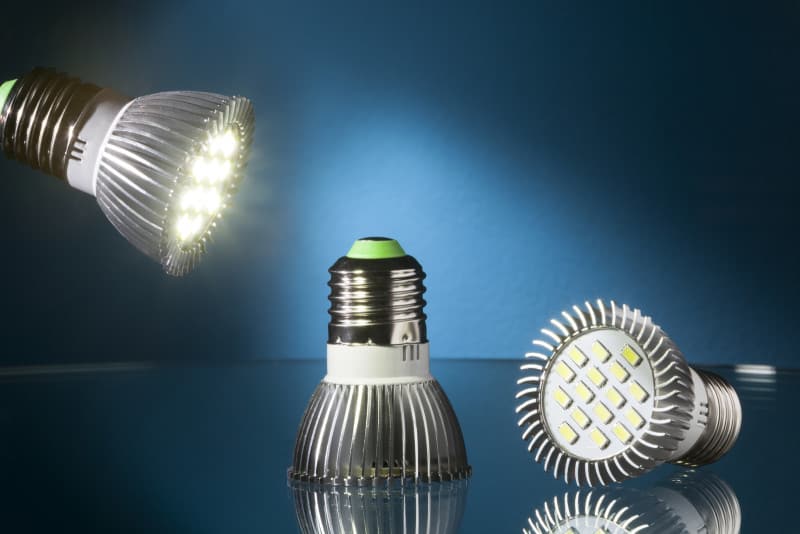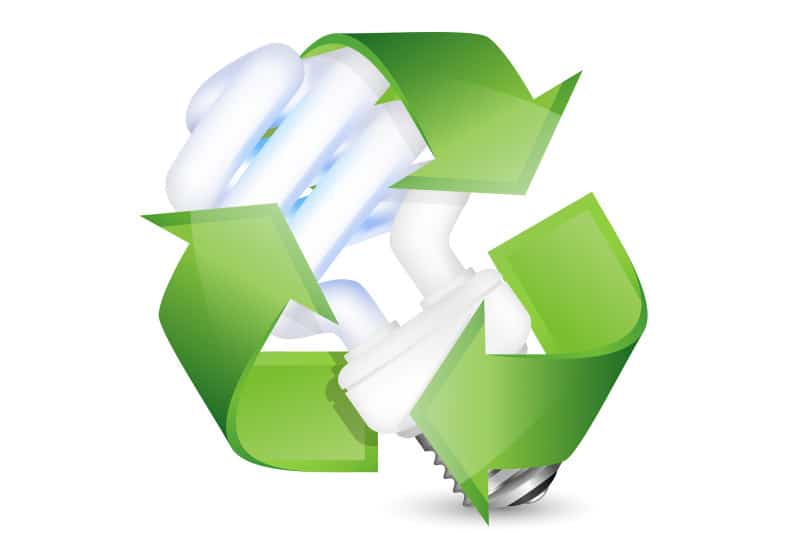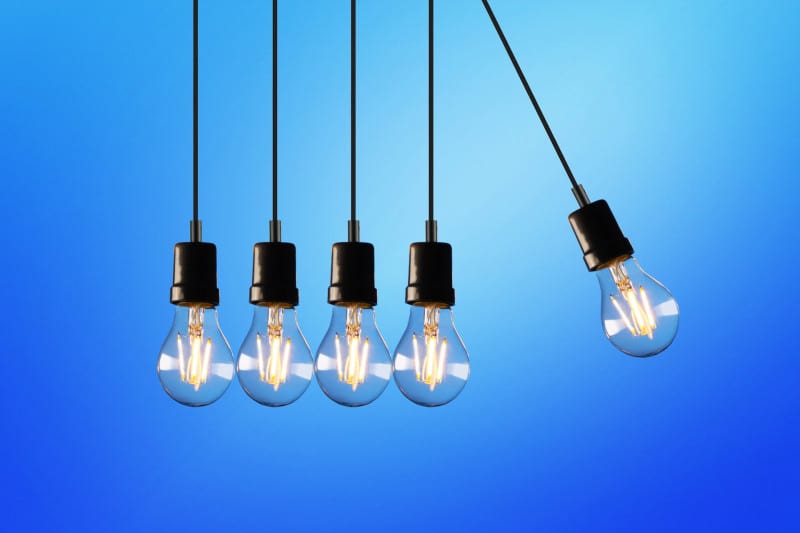Navigating the landscape of government regulations for energy-saving bulb disposal is like steering through a maze of environmental responsibility—you must be careful to follow the path laid out to ensure safety and sustainability.
As you toss out your used compact fluorescent lamps (CFLs) or LED bulbs, you’re not just throwing away a product; you’re handling materials that must be managed with care.
The government has established specific guidelines that dictate how you should dispose of these bulbs to minimize harm to the environment.
These rules are designed to keep hazardous substances, like mercury found in CFLs, from contaminating our soil and water.
Key Takeaways
- Government regulations and frameworks are in place to reduce hazardous waste from energy-saving bulbs.
- Energy-saving bulbs are classified as hazardous waste and guidelines exist for their handling and disposal.
- Designated disposal sites and collection infrastructure prevent bulbs from ending up in landfills and contaminating the environment.
- Compliance with disposal regulations is enforced through fines and penalties, and both businesses and consumers are required to comply with responsible bulb disposal regulations.
How Government Regulations Address Environmental Concerns
You’ll come across government regulations that specifically target the reduction of hazardous waste from energy-saving bulbs to protect the environment.
These regulations meticulously delineate the handling and disposal of bulbs containing hazardous materials such as mercury.
Designated disposal sites are often a central tenet of these regulations, ensuring that bulbs don’t end up in landfills where they can leach toxins into the ground and water.
Consumer responsibility is also emphasized, with educational campaigns and instructions on proper disposal methods.
These regulations often align with global standards, promoting a cohesive, international approach to managing hazardous waste from consumer products.
You’re part of a larger, environmentally conscious community, and understanding these regulations is crucial.
They’re not just rules but tools to safeguard our planet’s well-being, obliging you to be an informed and responsible participant in waste management.
Regulatory Frameworks for Bulb Disposal
Under various regulatory frameworks, you’re required to dispose of energy-saving bulbs at designated facilities to prevent environmental contamination.
These bulbs, due to their mercury content, fall under a specific waste classification, which dictates rigorous disposal protocols.
Regulatory agencies have set forth these classifications to ensure that hazardous materials aren’t carelessly released into the environment.
The disposal process is governed by both national regulations and international protocols. You must navigate these rules to understand where and how to safely dispose of your used bulbs.
The framework often includes a detailed collection infrastructure that facilitates proper disposal.
You’re expected to utilize designated drop-off points or hazardous waste facilities, which are equipped to handle these items in compliance with environmental safety standards.
Failing to adhere to these regulations can result in disposal fines.
Regulatory agencies conduct compliance monitoring and can impose penalties on individuals or businesses that dispose of energy-saving bulbs improperly.
Compliance Guidelines for Businesses and Consumers
Properly disposing of energy-saving lightbulbs is important for both businesses and regular folks.
These bulbs can contain hazardous stuff like mercury that needs special handling.
If we don’t dispose of them carefully according to local laws, it could hurt the environment or even hit us with hefty fines.
Luckily, many cities have free recycling programs to handle these bulbs safely.
For businesses, be sure to use authorized disposal services that can properly recycle the toxic components. Keep good records too in case inspectors come checking.
Mishandling these bulbs can cause real problems, but if we work together and handle them responsibly, we can enjoy their energy savings without guilt.
Emerging Technologies for Safe Bulb Recycling
As the industry’s focus sharpens on sustainability, you’ll find that new technologies are revolutionizing the way we recycle energy-saving bulbs.
Recycling facilities are now harnessing advanced disposal technology to handle the complexities of material recovery from these bulbs, which often contain hazardous waste such as mercury.
It’s essential to understand that the amalgamation of innovative methodologies isn’t only enhancing efficiency but also ensuring compliance with stringent environmental regulations.
You’ll observe that collection programs are being optimized through data analytics to streamline the gathering of spent bulbs, mitigating the risk of improper disposal.
These programs are critical in diverting bulbs from landfills and into recycling streams where they belong.
Material recovery processes are evolving with the advent of new machinery that can meticulously separate glass, metals, and other components without releasing harmful substances.
Emerging technologies in this sector are designed to meet regulatory demands for both safety and environmental protection.
As a result, you’re expected to rely on these advancements for compliant bulb disposal. It’s imperative to stay informed about these changes, as they directly impact how you manage waste from energy-saving bulbs.
The synergy of regulation and innovation is paving the way for a future where recycling isn’t only responsible but also resourceful.
Government-Encouraged Innovations in Disposal Methods
You’ll find yourself benefiting from government-encouraged innovations in disposal methods, which are making the recycling of energy-saving bulbs safer and more efficient.
These advancements stem from regulatory frameworks that mandate the proper handling of hazardous waste, including the toxic materials often contained in energy-saving bulbs.
The establishment of collection partnerships is also pivotal. These alliances between local governments, recycling centers, and retailers simplify the drop-off process for you, ensuring that bulbs are directed to facilities equipped to handle them correctly.
These partnerships often involve public education campaigns that inform you about the importance of proper bulb disposal.
Disposal audits are another critical tool. These systematic evaluations enforce compliance with hazardous waste regulations and improve the overall effectiveness of disposal programs.
They identify areas where the process can be refined, ensuring that the disposal of energy-saving bulbs doesn’t contribute to environmental harm.
Sustainable design is being promoted through government policies that encourage manufacturers to create products that are easier to recycle.
Government Efforts in Raising Awareness on Bulb Disposal
The government is working hard to teach all of us the right way to toss out energy-saving lightbulbs.
They know these bulbs contain some toxic materials like mercury, so they can’t just be thrown in the regular trash.
Through publicity campaigns and community programs, they’re breaking down exactly how to handle that hazardous waste properly and avoid contamination or fines.
We’re learning step-by-step instructions for safe disposal, plus warnings about why it matters. For example, cracks in old bulbs could leak dangerous mercury into landfills.
Local events even give hands-on practice recycling those old bulbs, thanks to partnerships between cities and waste collectors.
So instead of just orders from on high to dispose of bulbs correctly, we’re getting the knowledge and resources to actually do it.
This cooperative approach makes sure communities take real action to keep bulbs’ dangerous ingredients out of the environment.
Guided by good information and convenience, people like you and me can form the habits that will spare our world some toxicity.
Conclusion
When it comes to recycling hazardous waste like CFL and LED bulbs, we can’t afford to turn a blind eye – not when something as important as the health of our environment is at stake.
Government regulations exist to ensure that consumers and businesses handle these bulbs responsibly, with proper disposal infrastructure in place.
And as technology advances, recycling is becoming even safer and more efficient.
But at the end of the day, it comes down to each of us doing our part. We need to educate ourselves and follow the established guidelines.
Proper bulb disposal may seem inconvenient, but compared to the alternative – toxins leaching into our soil and water – it’s a no-brainer.
Collectively, our small acts can lead to big results. Because if we expect manufacturers and governments to continually improve disposal methods, we have an obligation to actually use those methods.
We owe it to future generations to leave behind a cleaner world.





